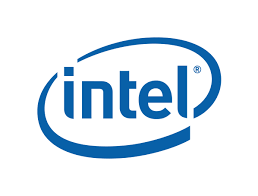
ntroducing Intel Core2 Quad processor for notebook and desktop PCs, designed to handle massive compute and visualization workloads enabled by powerful multi-core technology. Optimized for the longest possible battery life without compromise to performance, Intel Core 2 Quad processors for notebooks allow you to stay unwired longer while running the most compute-intensive applications.
- Providing all the bandwidth you need for next-generation highly-threaded applications, the latest four-core Intel Core 2 Quad processors are built on 45nm Intel Core microarchitecture enabling faster, cooler, and quieter mobile and desktop PC and workstation experiences.
- Plus, with optional Intel vPro technology, you have the ability to remotely isolate, diagnose, and repair infected desktop and mobile workstations wirelessly and outside of the firewall, even if the PC is off, or the OS is unresponsive.
- With four processing cores, up to 12MB of shared L2 cache,� and up to 1066 MHz Front Side Bus for notebooks, and up to 12MB of L2 cache� and up to 1333 MHz Front Side Bus for desktops, the Intel Core 2 Quad processor delivers amazing performance and power efficiency enabled by the all new hafnium-based circuitry of 45nm Intel Core microarchitecture.
- Whether you`re encoding, rendering, editing, or streaming HD multimedia in the office or on the go, power your most demanding applications with notebooks and desktops based on the Intel Core 2 Quad processor.
- Intel Wide Dynamic Execution, enabling delivery of more instructions per clock cycle to improve execution time and energy efficiency
- Intel Intelligent Power Capability, designed to deliver more energy-efficient performance
- Intel Virtualization Technology (Intel VT), enabling greater security, manageability, and utilization
- Dual Intel Dynamic Acceleration technology, improving four-core performance by utilizing power headroom of idle cores by dynamically boosting frequency of active cores
- Intel Smart Memory Access, improving system performance by optimizing the use of the available data bandwidth
- Larger Intel Advanced Smart Cache optimized for multi-core processors, providing a higher-performance, more efficient cache subsystem
- Intel Advanced Digital Media Boost, accelerating a broad range of applications along with Intel HD Boost utilizing new SSE4 instructions for even greater multimedia performance
- Future ready, designed to perform in highly threaded programs with powerful Intel multi-core technology
sSpec Number
- SLB6B
- 2.66 GHz
- 05A
- 1333 MHz
- 8
- 6 MB
- 2.66 GHz
- LGA775
- 45 nm
- R0
- 1067Ah
- 95W
- 71.4�C
- 0.85V � 1.3625V











































